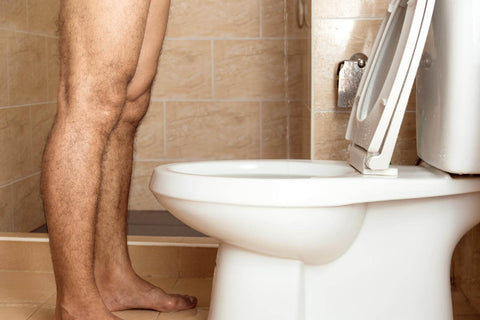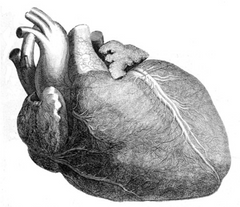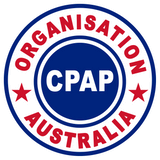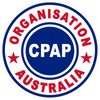What is the difference between Central and Obstructive Sleep Apnea?

Obstructive Sleep Apnea is a common sleep disorder with a prevalence of 11 to 30% in those aged 40 to 50. It is a condition that occurs when the upper airway collapses during sleep. This happens in all of us while we sleep, a loss of tone in the muscles and tissues in that area, which is exacerbated by additional variables such as a high arched palate and other oral pharyngeal characteristics that cause back narrowing at the rear of the throat.
Patients frequently present with greater anxiety about their inability to breathe through their nose, resulting in nasal congestion, yet this only plays a small role in Obstructive Sleep Apnea. Other systemic risk factors include acromegaly hypothyroidism, diabetes, heart failure, and fluid retention.
Hypercapnia
Patients who have morning headaches are at an elevated risk of being diagnosed with obstructive sleep apnea. Hypercapnia, the build-up of carbon dioxide in the bloodstream which produces vasodilation and headaches, is to blame. The classic pattern is for patients to complain of a headache that starts when they get up and goes away when they take paracetamol or take a shower. However, it is only the passage of time that permits the ventilation to eradicate co2.
Nocturia
Most people in their twenties and thirties can sleep through the night without needing to urinate. This is not the situation in persons suffering from sleep apnea. There is a recurring pattern in which we see people need to get out of bed to use the bathroom and this is remedied after the sleep apnea is cured.

Uncontrolled sleep apnea reduces Antidiuretic Hormone (ADH) secretion, which is reversed once the illness is under control. When we evaluate the phases used to characterize sleep apnea, we can state that it is a scenario in which there is a cessation of breathing. A partial cessation of breathing is referred to as hypopnea. There is a reduction in flow and a decrease in oxygen saturation. It is not, however, a complete standstill.
CPAP Therapy
Positive pressure therapy from CPAP sleep apnea devices and cpap nasal masks aid in this cessation. Most patients spend their time arguing about why they do not want to be treated for Obstructive Sleep Apnea, yet full face CPAP masks and sleep apnea pillows have advanced dramatically. The posterior airway is stented in CPAP therapy. If a seal is maintained, the posterior airway is stent-free, and airflow is permitted. Mandibular advancement is another option. This device pulls the mandible forwards by using the upper teeth as a fulcrum.
Difference between Central Sleep Apnea and obstructive sleep apnea
Airflow happens because of respiratory effort. When we look at central sleep apnea, there is no respiratory activity and no airflow. Despite respiratory efforts, Obstructive Sleep Apnea causes a relative deficiency of airflow. The apnea hypopnea index is used to assess the severity of sleep apnea (AHI). An AHI score of up to five per hour is considered normal, while a value of up to fifteen per hour is considered mild. Severe is defined as a score of 30 or above. These figures are only meaningful if they can be linked to complications. Patients under the age of thirty who have minor sleep apnea are almost free of cardiovascular disease risk. Above the age of thirty, there is an increased possibility.
Other etiologies are associated with Central Sleep Apnea as opposed to Obstructive Sleep Apnea. There can be heart failure and, less commonly, brainstem lesions. There can also be a condition known as idiopathic Central Sleep Apnea.
A hypnogram is a diagrammatic representation of sleep study data correlated over the course of the night. The data can be used to identify distinct types of respiratory episodes. Apnea occurrences related with oxygen deficiency are visible. Often, the patient does not enter stage three, deep sleep, or REM sleep. Sleep apnea causes hypoxemia and hinders people from falling asleep deeply, making them exhausted the next morning.
The apneas can be corrected with CPAP therapy. The patient will now be getting enough REM sleep, a condition known as REM rebound. Sleep apnea reduces REM sleep and treating sleep apnea results in REM rebound and normalization of oxygen saturation. After CPAP therapy, the patient's condition can vastly improve.
Physiological considerations
When we inhale, we create a negative intrathoracic pressure in our lungs. However, the issue with Obstructive Sleep Apnea is that the upper airway is closed. To impact the downward pressure gradient, we need to generate a stronger negative intrathoracic pressure. Because the heart structures must function against this pressure, there are considerable cardiac interactions. There is an increase in left ventricular transmural pressure, which leads to increased afterload and increased right ventricular preload, as well as increased venous return. You also obtain a decrease in LV filling and a rise in RV afterload because of hypoxic vasoconstriction. Other cardiopulmonary conditions, such as pulmonary hypertension, may amplify this trend.
Mechanically, this results in simultaneous LV afterload, and reduced preload results in decreased stroke volume and cardiac output. And this pattern is more pronounced, and recovery is significantly more physiologically delayed, with the danger of systolic cardiac failure. Other factors to address in the context of apnea-induced hypoxemia include increased myocardial oxygen demand and decreased coronary perfusion. Other autonomic repercussions of Obstructive Sleep Apnea exist. In terms of the sympathetic nervous system, there are major impacts. In a normal patient, there is relative quiescence of the sympathetic nervous system overnight, according to measures of sympathetic nerve activity. In the case of obstructive sleep apnea, however, there is an increase in activity that lasts not only during sleep, but also until the end of the next day. In other words, a patient suffering from untreated Obstructive Sleep Apnea has a higher level of sympathetic tone throughout the 24-hour cycle.
Nocturnal Fluid Shifts
In terms of Central and Obstructive Sleep Apnea, nocturnal fluid fluctuations are noteworthy. By the end of the day, fluids tend to accumulate in the lower limbs of individuals with heart failure. Some of that fluid returns to the chest area when they sleep and lie recumbent. In accordance with this fluid-shift backup, the frequency of respiratory episodes increases throughout the night.

Impacts on the Heart
The risk of Obstructive Sleep Apnea in patients with hypertension is two to three times that of a normal individual and that risk is even further magnified when people have recalcitrant hypertension and multiple antihypertensive medications.
What is Central Sleep Apnea?
Obstructive Sleep Apnea is different from Central Sleep Apnea. Because the upper airway is not closed, the patient is not experiencing high negative intrathoracic pressures. There is less of a swing in intrathoracic pressure, and hence less of the preload-afterload impact seen with obstructive sleep apnea. There is, however, nocturnal hypoxia, higher arousals, significantly elevated sympathetic activity, and a link to high blood pressure. In addition, sympathetic activity has been found to be higher in patients with Central Sleep Apnea who have had heart failure. However, many of these studies were conducted before to the development of beta-blockers, thus this must be considered.
Sleep Apnea and cardiac disease
Patients who have suffered heart failure are more likely to have central sleep apnea. Pulmonary hypertension affects the right ventricle. When a patient has RV dysfunction, they can develop heart failure, which is a risk factor for Obstructive Sleep Apnea, but it is also present when you have Obstructive Sleep Apnea. RV dysfunction is especially troublesome.
As previously established, hypoxic vasoconstriction occurs in obstructive sleep apnea. This hypoxic basal constriction increases afterload on an already weakened RV. It is particularly important to remember in the treatment of Obstructive Sleep Apnea. Normally, the pulmonary circulation is dilated and has a low resting tone. The recruitment of vessels during exercise aids cardiac output, resulting in an increase in the pulmonary vascular bed. In fact, because there is so much vascular recruitment available, most individuals who exercise do not experience an increase in pulmonary pressures. In the case of pulmonary hypertension, this is not the case. When you add an extra issue, such as obstructive sleep apnea, all these factors lead to RV impairment.
Patients with Obstructive Sleep Apnea caused by elevated sympathetic tone are more likely to develop left ventricular concentric hypertrophy and, as a result, pulmonary venous hypertension. Because of this, the association between Obstructive Sleep Apnea and Pulmonary Hypertension works both ways.
Obstructive Sleep Apnea and Central Sleep Apnea both have significant mechanical, autonomic, and inflammatory effects on the heart, with Obstructive Sleep Apnea having a greater impact than central sleep apnea. CPAP aids in controlling and eliminating these intermediate abnormalities.


Leave a comment